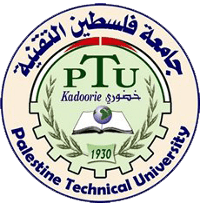Please use this identifier to cite or link to this item:
https://scholar.ptuk.edu.ps/handle/123456789/408 cc-by
| Title: | The Effects of Feeding Silage of Different Byproducts on the Lactation of Assaf Sheep, " |
| Authors: | Badran, Iyad fatafta, mahmood qaisi, rami salman, muyad |
| Keywords: | milk;performance;feed;silage |
| Issue Date: | Oct-2014 |
| Publisher: | International Research on Food Security, Natural Resource Management and Rural Development Bridging the gap between increasing knowledge and decreasing resourcesBridging the gap between increasing knowledge and decreasing resources", Tropentag, |
| Abstract: | This experiment was conducted between January and May 2013 as one of the main activities of Middle East Regional Agricultural Programme (MERAP) - animal wealth component. A mixed silage was made from different byproducts and crop residues (hibiscus, tomato, chick-pea, peppers, eggplant, corn, and pistachio), using both barrel and trench method. A feed trail to study the effect of feeding silage on Assaf sheep milk quantity and quality was executed in Beit Hassann (village belonging to Nablus governorate, West Bank). Twenty one lactating Assaf ewes were divided in three groups according to daily feed intake: group 1 one fed concentrate and wheat hay as roughage source, group 2 fed concentrate and roughage (50 % hay and 50 % silage), and group 3 fed concentrate and as roughage 100 % silage. Total milk yield to 90 days of lactation TMY90, total milk yield to 120 days of lactation TMY120, and total milk yield to 150 days of lactation TMY150 were estimated. Milk samples were analysed for fat, protein, minerals, lactose, and non-solid fat percentage. Data were analysed using SPSS 16 for windows. The results showed no significant difference (p > 0.05) in milk production between group 1 and group 3, the difference was between group 2 and the other two groups (p < 0.05) which produced more milk. Also the percentage of fat was significantly higher in group 2 (p < 0.05) compared to group1 and group 3. Moreover, feeding silage raised milk production by 14 % and lowered the cost of feed by 10.6 and 21.3 % in group 2 and group 3, respectively. It was concluded that substitution of wheat hay by 50 % of silage increased milk production of Assaf ewes and decreased daily ration cost. More feed trails are needed to study the effect of replacing part of concentrate and roughage with sufficient amount of silage. |
| URI: | https://scholar.ptuk.edu.ps/handle/123456789/408 |
| Appears in Collections: | Sciences and Agricultural Technology Faculty |
Files in This Item:
| File | Description | Size | Format | |
|---|---|---|---|---|
| proceedings.pdf | book | 3.49 MB | Adobe PDF |  View/Open |
Items in DSpace are protected by copyright, with all rights reserved, unless otherwise indicated.
